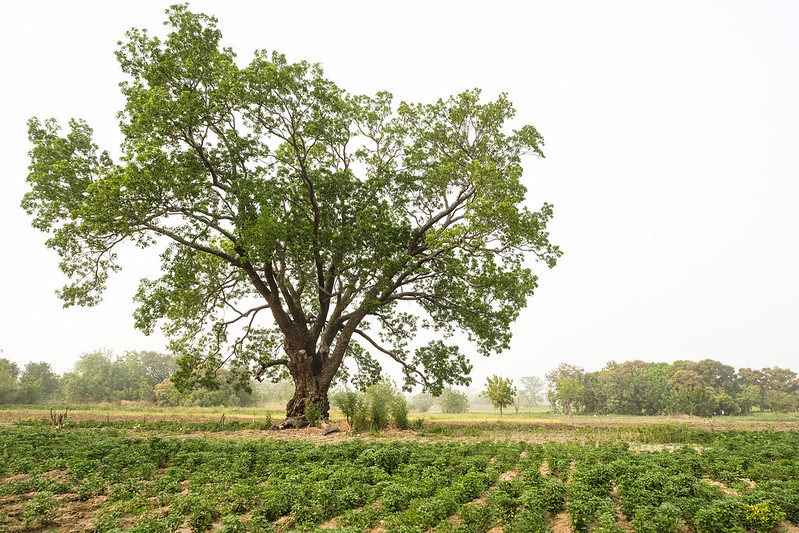Over the past several years, a gradual transformation has been occurring in some parts of the Indonesian landscape.
In East Kalimantan, for example, where once the land was scarred and the soil depleted of life-supporting nutrients due to fire, now birds, insects, bees and butterflies are finding habitats.
They are attracted to recently planted trees that are beginning to flower and fruit in the Bukit Soeharto Research and Educational Forest at Mulawarman University, where a potential biofuel tree suited to the tropics, nyamplung (Calophyllum inophyllum) is being tested.
The nyamplung species is under experimentation as a potential biodiesel alternative to restore degraded peatlands under climate smart agroforestry approaches established by researchers with the Center for International Forestry Research and World Agroforestry (CIFOR-ICRAF) who are working in collaboration with Indonesia’s Ministry of Environment and Forestry, research institutions Muhammidiyah University in Palangkaraya and Sriwijaya University and the National Institute of Forest Science (NIFoS) in South Korea.
The species – like pongamia – is attractive as it grows well in harsh environmental conditions and can produce a high volume of oil from its seeds and kernels.
This project and others involving biomass energy are described in a new book launched on Wednesday at the World Forestry Congress in Seoul titled Bioenergy for Landscape Restoration and Livelihoods: Recreating Energy-smart Ecosystems on Degraded Landscapes edited by CIFOR-ICRAF scientists Himlal Baral, National Research and Innovation Agency Senior Researcher and Professor Budi Leksono and Mihyun Seol, who is also affiliated with NIFoS.
In Indonesia, about 40 percent of the country’s population of 280 million people do not have access to reliable electricity, in part due to distribution challenges across the archipelago of 17,000 islands – only 9,000 of which are inhabited.
The book details the various elements of largescale research efforts supporting Indonesia’s ambitions to provide its entire population with energy – almost a quarter of which must be derived from new and renewable energy sources by 2025 — under its National Energy Policy. Biomass is classified as renewable if its rate of consumption does not exceed its rate of regeneration.
“If they are developed and deployed efficiently using climate smart agriculture techniques, bioenergy plantations have the capacity to restore degraded land, while enhancing biodiversity, environmental services and benefiting rural livelihoods,” Baral said.
“We believe that using fruits, nuts and biomass for energy compensate for the high initial investments required for restoration while offering such additional benefits as climate regulation and biodiversity.” Leksono added.
Land restoration is considered a key component for addressing systemic environmental concerns, including the changes wrought by climate change, biodiversity loss, desertification and drought. Population growth, increasing consumption and demand have led to increasing forest conversion for other land uses in the tropics.
Restoring land with bioenergy crops is a relatively new concept and the book brings together a range of studies conducted over the past six years, which illustrate current practices, guidance, monitoring and lessons learned.
It features chapters focused on policy analysis, geospatial assessment for identifying land suitability, farmers’ perceptions and species-specific details useful for land managers, planners and policymakers.
The socioeconomic and environmental benefits of nyamplung-based bioenergy production in rice, maize, peanut and honey agroforestry systems are examined. Research into bamboo cultivation and plantation management is also described.
A sweeping survey deploys spatial analysis, which estimates the extent of available lands of the degraded areas in Indonesia, covering production, growth model and carbon stock potential. Another offers guidance on enabling conditions, policies, financing and incentives.
“The evidence presented acknowledges land scarcity and the need for biofuel production to avoid competition with agriculture and expansion into forested areas, a scenario that benefits people and the planet,” said Robert Nasi, director general of CIFOR and managing director of CIFOR-ICRAF.
“Growing biomass for energy on degraded and underutilized land is an important land use strategy, which takes into account its potential for enhancing soil fertility, improving farm production, incomes and biodiversity while supporting climate and sustainable development goals.”
Investigations into soil macrofauna biodiversity and changes in soil fauna patterns in a burned peatland under restoration with a bioenergy crop plantation are also revealed.
The book includes the human dimension, offering insights and recommendations for involving landowners in the development of bioenergy crops in restoring degraded lands.
Practical aspects of bioenergy production are also explored, including a method for extracting oil from pongamia seeds.
In another, a biomass gasification project and a community biomass-based power generation system for electrification in inaccessible rural areas are proposed and evaluated.
“Under the right conditions, the two objectives of land restoration and bioenergy production are not antagonistic, but synergetic, a point that this book makes very well,” said Vincent Gitz, director of programs and platforms at CIFOR-ICRAF. “It will be very useful for a range of stakeholders in the land and energy sectors to expand a modern and ecological agenda.”
We want you to share Forests News content, which is licensed under Creative Commons Attribution-NonCommercial-ShareAlike 4.0 International (CC BY-NC-SA 4.0). This means you are free to redistribute our material for non-commercial purposes. All we ask is that you give Forests News appropriate credit and link to the original Forests News content, indicate if changes were made, and distribute your contributions under the same Creative Commons license. You must notify Forests News if you repost, reprint or reuse our materials by contacting forestsnews@cifor-icraf.org.















